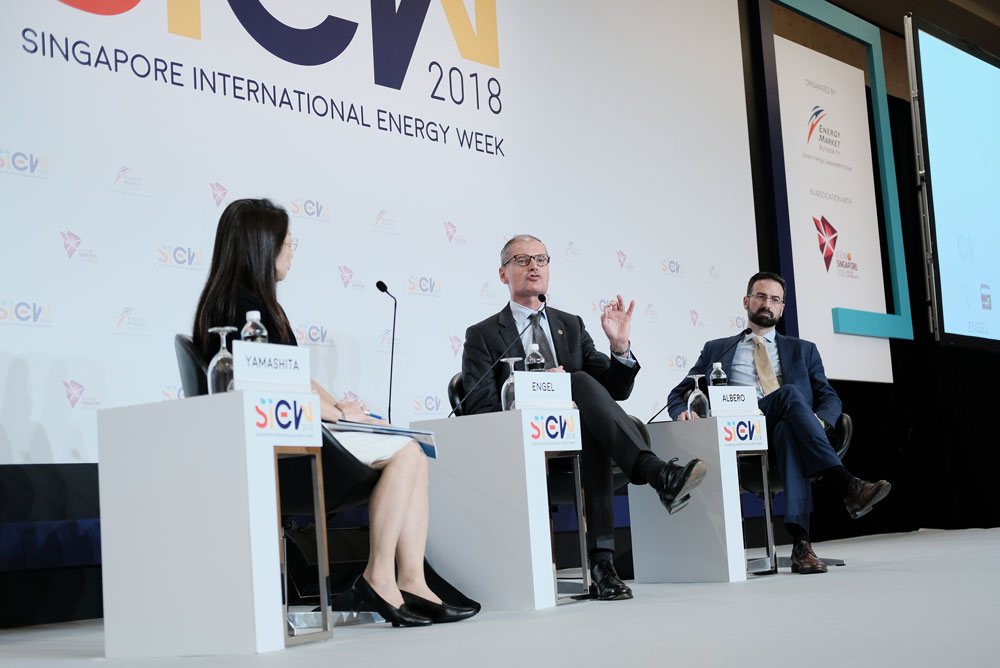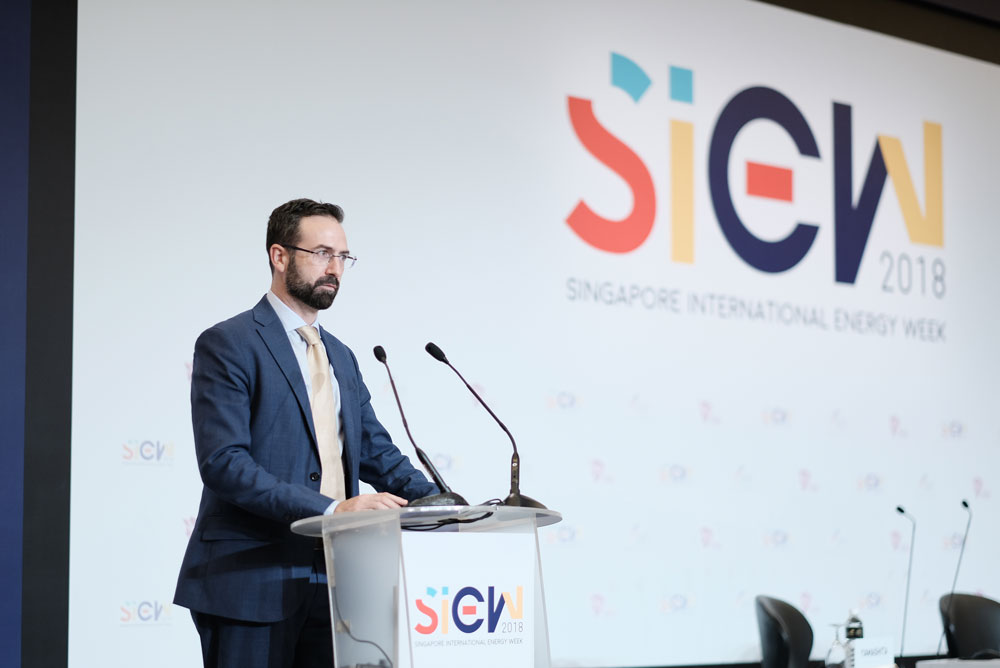DNV GL’s Energy Transition Outlook 2018 report paints a picture of an energy landscape very different from today’s. By Ryan Yap.
Over the next three decades, the world’s energy system is likely to become substantially cleaner, more affordable, and more reliable, and it is important for businesses, investors and governments to understand the significance of this seismic shift. Mr Ditlev Engel, CEO of DNV GL-Energy, offered this insight on Oct 31 as part of his presentation of the Energy Transition Outlook 2018, the firm’s independent forecast of the global energy future from now till 2050.

“The energy transition will be affordable,” said Mr Engel, noting that expenditure on energy as a proportion of the world’s GDP will be lower in 2050 than it is today. Big shifts in investments are also expected as more capital expenditure go into grids and renewables, and away from fossil projects from 2029 onwards.

Despite the rapid transition to clean energy, it will still be insufficient to achieve the goal of a less than two-degree Celsius increase in global temperatures from pre-industrial levels this century. A combination of ramping up energy efficiency, utilising more renewables, as well as carbon capture and storage will be needed to achieve this target; which was set by the Paris Agreement on climate change.
At a panel session moderated by Ms Yukari Niwa Yamashita, Board Member and Director at the Institute of Energy Economics, Japan, Mr Engel said that the main challenges in meeting the goals of the Paris Agreement have arisen as a result of market mechanisms and government regulations, rather than technological issues.

Meanwhile, Mr Carlos Albero, Global Finance Segment Leader at DNV GL – Energy, remarked that having the right support from regulatory frameworks is key to attracting investments to the sector.
The suite of Energy Transition Outlook 2018 reports is available for download free of charge. The main report covers the transition of the entire energy mix up to 2050. It is accompanied by three supplements forecasting the implications for the oil and gas, power supply, and maritime industries.
Mr Ditlev Engel, CEO of DNV GL shared the following highlights from Energy Transition Outlook 2018:
- The primary energy supply and energy demand are forecast to peak in 2032 and 2035, respectively. Important observations include the peaking of oil use in the early 2020s, followed by its decline largely as a result of cheaper electric vehicles.
- The world will need less energy from the 2030s onwards owing to rapid energy efficiency gains.
- The world’s energy system will decarbonise, with non-fossil sources increasing from 20% to 50% in the primary energy mix by 2050.
- Electricity consumption will more than double by 2050 to meet 45% of the world’s energy demand, and solar PV and wind energy will supply more than two thirds of that electricity.